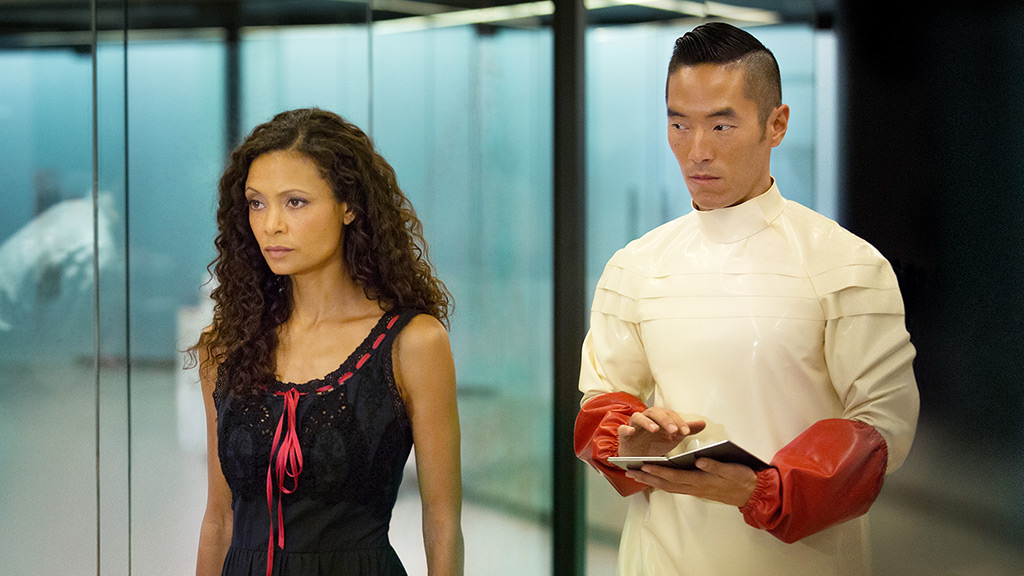By John Tan
This paper aims to explore the history of radio and television in reference to Paddy Scannell’s notion of ‘dailiness’. Scannell’s idea of ‘dailiness’ shares certain similarities with the concept of ‘daily routine’. The author coined the term to describe recurring events that occur due to repetition. This means the “daily service” as Scannell puts it, are performed so naturally due to much practice from the individual. Silverstone (1993) supports Scannell’s notion of dailiness, using the term to cite the influence of broadcast media on the structuring of everyday life (Silverstone, 1993, p.294). The rationale for analysing the history of radio and television is to comprehend how consumers came to experience the two mediums as part of their daily lives. To illustrate this, a detailed analysis will be made on the evolution of the consumption of radio and television in everyday life.
In his book Radio, Television, and Modern Life (1996), Scannell was fascinated
with investigating the “nature of everyday existence as being-in-the-world”.
His focus was on broadcasting and how it impacts our sense of time. In the
journal, the writer analysed the programs of the news channel, BBC. The purpose
of doing so was to understand the engagement between the viewer/listener and
the broadcaster. More importantly, he was curious to discover the intentions
behind the broadcasting and the level of understanding from the audience of
those intentions. Through this, he learned that the broadcasters acted upon the
concept of the day. This means they structured their programs according to the
norms of everyday life (Scannell, 1996, p.145- 150).
According to Scannell, the
broadcasting industry started off with the need to please audiences. Thus, the
programmes were made solely based on the interest of the audiences. In order to
reach the full potential of viewership, the industry had to create a sense of
formula. In other words, there was a need for an immersed institutional
structure where the effort is focused on making the programs fit into the daily
routines of the audiences. This meant that the act of tuning into the
programmes should be regarded as unpredictable and as an act of routine without
the audience being conscious about it. Here, Scannell demonstrates the
relationship between media and dailiness. (Ibid, p.145)
The findings of this study support
the belief that the media influences our sense of time. For instance, late night TV
shows such as The Tonight Show Starring
Jimmy Fallon and The Late Show with
Stephen Colbert is aired on a specific time daily. The rationale behind it
is to create a sense of routine, to make viewers become accustomed to it. Eventually,
this will turn into a habit making the particular media an essential in the
user’s daily routine without them even being conscious about it. So much so
without it, it creates anxiety since the user doesn’t feel connected (Cuvalo,
2016, p.71). These media rituals, as a result, creates as Scannell puts it ‘‘care-structures’.
The term refers to the concerns that pre-occupy one's time and the meaning of
‘my time’, which refers to one’s personal and subjective experience with time.
The author claims that various features of media programs assist in expressing
our care structures and by doing so, it helps in connecting us to the broader
social world. (Scannell, 1996, p.144-145)
Radio
The first journal that reflects this
belief is Housewives and the Mass Media
(1980) by Dorothy Hobson. In this study, the author studied the role radio
had in the lives of housewives. (Hobson, 1980, p.93). After various interviews
and observations, Hobson learned that radio was essential to her subjects. The
housewives never considered listening to the radio as a hobby. Instead, they
deemed it as an integral part of their day. The two mediums worked as a monitor
of time for them. Their daily activities were scheduled according to the
broadcast. Through consuming the following mediums, it becomes easier for the
housewives to battle loneliness and connects with the outside world. (Ibid,
p.94) The cause for this occurrence is due to the style of interaction that is
used with the audience. The adopted method helped the broadcasters seem
ordinary and sociable. (Moores, 2000, p.19).
The San Vittore Prison
Nearly 3 decades later, radio
shouldered the same responsibility. Following the journal Media, Culture & Society, a social experiment was conducted in
the San Vittore prison to report how radio was utilized among the prisoners.
According to the journalists, radio fulfilled three important needs. Firstly,
the medium worked as a tool of connection. The act of listening to the radio was a
form of opportunity for the prisoners to connect with the outside world, even
without being physically present. (Bonini & Perrotta, 2007, p.185) Programmes
such as newscasts, traffic reports, musical tunes, and phone-in interviews were
the popular choice among them. Such programmes consist of an element that ties
people together. Its form of continuity and repetition helps broaden boundaries
because it sparks wishes, opinions, and testimonies among the prisoners. One was
quoted saying;
“I’d
like to phone and go in, because sometimes they talk about such bullshit,
outside people- they don’t realize how important certain small things are. I do
realize it. When you reach a certain maturity inside the prison you notice how
important small things are. “
Aside from that, the radio worked like a
form of connection through working as a connection tissue among the cellmates.
For instance, preferences for certain programmes, music genres or radio hosts
can affect the relationship between the cellmates. Besides that, they would
listen to the radio in groups. Simple music or a music programme that everyone
likes was often played in the background. This includes Sundays when nobody
works or group dancing during the cell-cleaning time. Here radio is a symptom or a
cause of integration.
Last but not least, radio was the
only option for connecting with the outside world because it established a
sense of contact with the citizens outside. Contrary to the first point, radio
here functions by fulfilling the need for intimacy with people outside the bar.
The electronic media makes it possible by providing the inmates with an
experience through the voices, words, and emotions that are broadcast during the
airing of the program. As Thompson (1995) notes, this form of intimacy is
different compared to face-face relationships. This kind of intimacy as the
author puts it, are referred to as ‘panoptical’. To be more specific, the term is
used to describe when someone (the listener) is listening to an unseen,
somehow ‘sees’ the other person, be it the speaker, call-in public or a singer-
whose details such as personal thoughts and history are revealed without the
possibility for the listener to do the same.
The San Vittore Prison in 1880
This scenario proves some truth to
Bull (2002)‘s quote that says; “through the power of sound the world become
intimate, known and possessed.”
The next role radio had in the lives
of the inmates is that it acted as an isolation barrier. In this context, radio
assisted in offering the inmates with personal space. On a usual day in the
prison, the detainees share a cell with five or six other people. Thus, they
are limited to a certain amount of movement and expression. This is because
their gestures and words are always monitored. As for their personal thoughts,
they are only private if it’s not shared publicly. Hence, for this situation,
radio rebuilds the private sphere of the prisoners.
“But the
radio here in prison is a very personal thing. There are moments when we all
gather and do stuff when the radio can be fine, but mostly you listen to it on
your own, just because with the radio it’s a break time, and here there are a
few moments you are on your own and can really think for yourself. You can have
a break, put the headset on, you get out of the context of the cell.”
Through their time alone with the
radio, they are able to indulge in their personal thoughts. For example, they
are given the opportunity to reminisce about their life before prison.
Furthermore, the radio is consumed because it became a part of their daily routine.
The element of dailiness is seen in this situation. The act of tuning into the
radio becomes their daily habit, so much it dictates their concept of time. The
prisoners are already conditioned to carry out their daily routine with the
radio playing in the background. As an instance, they wake up, shave, wash, get
dress, have coffee and fall asleep every day with the radio.
Due to the constraints of the prison,
the inmates are bound to experience a sense of boredom. This is due to the repetitive
life that is set for them. On a daily basis, they live in the same space and
live by appointments. Here, radio is crucial for them because it gives them the
opportunity to set their time free. Besides that, it allows them to re-invent
their days with new methods every day. As an example, with the presence of
radio in their life, they are allowed for a balance between the daily
appointments and routines assigned to them. The medium possesses the ability to
do so because it dabbles with the aspect of repetition that is present in their
lives. It means that the radio is capable of creating a sense of attachment by
confirming or molding their preferences and linking itself to habits.
In the current time, the radio takes a
different form. Based on the journal Social
and Cultural Practice Using the Music Streaming Provider Spotify by Anbuhl
(2018), the music industry has gone through a change in the last couple of
years. Unlike its preceding years, the industry has evolved in terms of
offering their services. One notable example would be Spotify. (Anbhul, 2018,
p. 5) The music streaming company allows for music to be accessible to all its
listeners. Its features provide
listeners with the liberty to pick and dictate their own music playlist and
even share it with other individuals. Gilmour (online). For this research, ten
individuals from the age group of 20 to 30 year old were interviewed. According
to the findings, it was evident that listening to Spotify was an integral part
of their daily lives. As an illustration, some of the respondents listen to
Spotify when they are using the public commute. Here they mostly engage in
passive listening mode while observing the environment around them or scrolling
through their social media timeline. In addition to that, another participant
consumes Spotify in order to block out the noise when he is using public
transport. This habit mirrors Bull's belief on “biographic travelling” (Bull,
2005, p.349).
The next researchers to echo the
findings of Anbhul (2018) are Sari Komulainen and Minna Karukka. The following
scholars conducted research to investigate the role online music services had
in the youths of Finland. The findings of their journal titled ‘Social music
services in teenage life – A case study’ showed that the youths consumed the
services for an average of 4 to 5 hours. The reason for doing so can be divided
into 3 reasons. The first being to discover and listen to new music tunes.
Secondly, it’s used during social situations such as listening to themselves or
with friends. Finally, it’s used for the purpose of sharing their playlist with
their friends.
Television
As for television, the medium was first looked into by Morley “Family Television” in 1986. The author’s intention
for this study was to investigate the level of understanding of television
materials and how the medium is being used in households. To fulfill his
objective, the researcher conducted interview sessions among families in The United Kingdom. This included families from various socioeconomic backgrounds.
(Morley, 1986, p.8) The results of this research showed that television worked
as a tool to establish a sense of hierarchy in households. One notable example
would be the household Family 9 in the study. The mother in the family takes
pleasure in watching programs such as Coronation Street and Eastenders.
Unfortunately, the power to decide the TV programs is only in her hands when
the father is not around. This is because the father possesses the ability to
dictate the kind of programs the family views. (Ibid, p.10)

The cast of Neighbours
A few years later, television is
experienced in a different manner. In Television
Fan Distinctions and Identity: An Analysis of ‘Quality’ Discourses and Threats
to ‘Ontological Security’ by Williams (2008), the importance of ontological
security was shown in reference to television programs such as Big Brother, Neighbours, and The West Wing.
Ontological security was the main factor for the success of the following
shows. For ontological security to work, it needs the television programs
to be set in a routine and to adhere to a form of scheduling. In this case,
shows like Neighbours was screened
twice daily on five days of the week, almost a year around. Thus, the show
earned an important place in UK broadcasting history because it became the
first show to be screened over five days (Cunningham and Jacka, 1996, p.140;
Dunleavy, 2005, p.376). During the initial stage, the show attracted audiences
that consist of housewives, shift workers, the unemployed and people homesick
(Oram, 1988, p. 48). However, due to its consistent screening, the show managed
to stay on the air for over twenty years. This is caused due to factors such as
longevity and scheduling. The two following factors contributed by allowing
fans to be invested in the following characters of the show. Nevertheless, it
allows for die-hard fans to display their long-term knowledge of the show.
“Do you
think we actually want the show to fail? Would some of us have sat through this
show for upward of 15 years just to want it to fail? The answer is no. Most, if
not everyone loves this show. No one wants to see it go but if it keeps going
on this course, it will.”
The final journal ‘Dailiness’ in the
New Media Environment: Youth Media Practices and the Temporal Structure of Life-World
by Cuvalo (2016) exhibits how television is currently being experienced in the
present. Considering that there are two types of media now; traditional and
new, the theorist discovered that traditional media such as television is used
in more conservative places like home. This is because television is only used
for the context of relaxation, reflection, or during bonding sessions with
family and friends. Just to mention an example, a respondent mentioned that The TV is immediately turned on when the person returns home especially after a
difficult and long day.
In conclusion, the above findings of
the aforementioned journals prove that radio and television have been an
integral part of the human race. This is only going to continue because the findings
prove how depended we can be on technology. The act of dailiness is caused due
to much repetition and practice. The cause however of the repetition and
practice is initiated due to the need for the media to assist in addressing or
coping with the challenges that come with the contemporary lives we all live
in.
References
Anbuhl (2018) ‘Social and Cultural
Practices around Using the Music Streaming Provider Spotify’
Bonini, T. & Perrotta, M. (2007) Media, Culture&
Society. Sage Publication
Bull, M. (2002) ‘The Seduction of
Sound in the Consumer Culture: Investigating Walkman Desires, Journal of
Consumer Culture 2(1):81-101
Bull, Michael (2005): No Dead Air!
The iPod and the Culture of Mobile Listening. Leisure Studies 24 (4), pp.
343–355. DOI: 10.1080/0261436052000330447.
Cunningham, Stuart and Elizabeth
Jacka (1996) Australian Television and
International Mediascapes, Cambridge and New York: Cambridge University
Press.
Cuvalo, A. (2016). ‘Dailiness’ in the
New Media Environment: Youth Media Practices and the Temporal Structure of
Life-World. pp. 71, 73
Gilmour, Spotify Features [online] Available from: https://www.dummies.com/social-media/spotify/spotify-features/ [accessed 11/01/2019].
Hobson, D. (1980)
‘Housewives and the Mass Media’, in S. Hall, D. Hobson, A. Lowe and P. Wills
(eds) Culture, Media, Language: Working
Papers in Cultural Studies, 1972-79, London: Hutchinson
Komulainen, S., Karukka,
M., Hakkila, J. (2010) ‘Social music services in teenage life – A case study’ DOI:
10.1145/1952222.1952303
Morley, D. (1986). Family television.
pp.1,8,9,10.
Moores, S. (2000) Media
and Everyday life in Modern Society, Edinburgh: Edinburgh University Press
Oram, James (1988) Neighbours: Behind
The Scenes, London; Agnus & Robertson.
Scannell, P.(1996) Radio
Television, and the Modern World. Oxford & Cambridge: Blackwell Publishing.
Silverstone, R. (1993a)
Television and Everyday Life. London: Routledge
Thompson, J.B. (1995) The
Media and Modernity: A Social Theory of the Media. Cambridge: Polity.
Williams, R. (2008) Television
Fan Distinctions and Identity: An Analysis of ‘Quality’ Discourses and Threats
to ‘Ontological Security’. U584304
Image sources:
NBC (Jimmy Fallon)



















Follow Us
Were this world an endless plain, and by sailing eastward we could for ever reach new distances